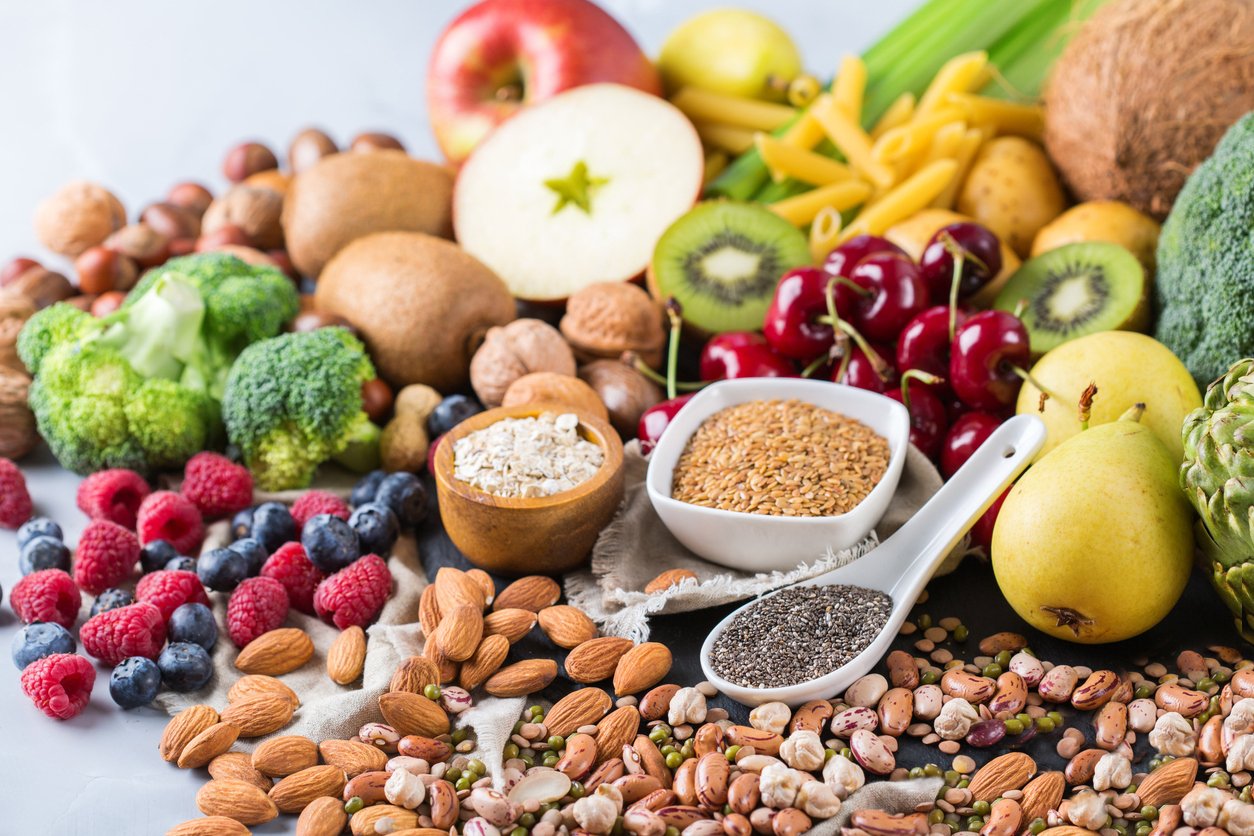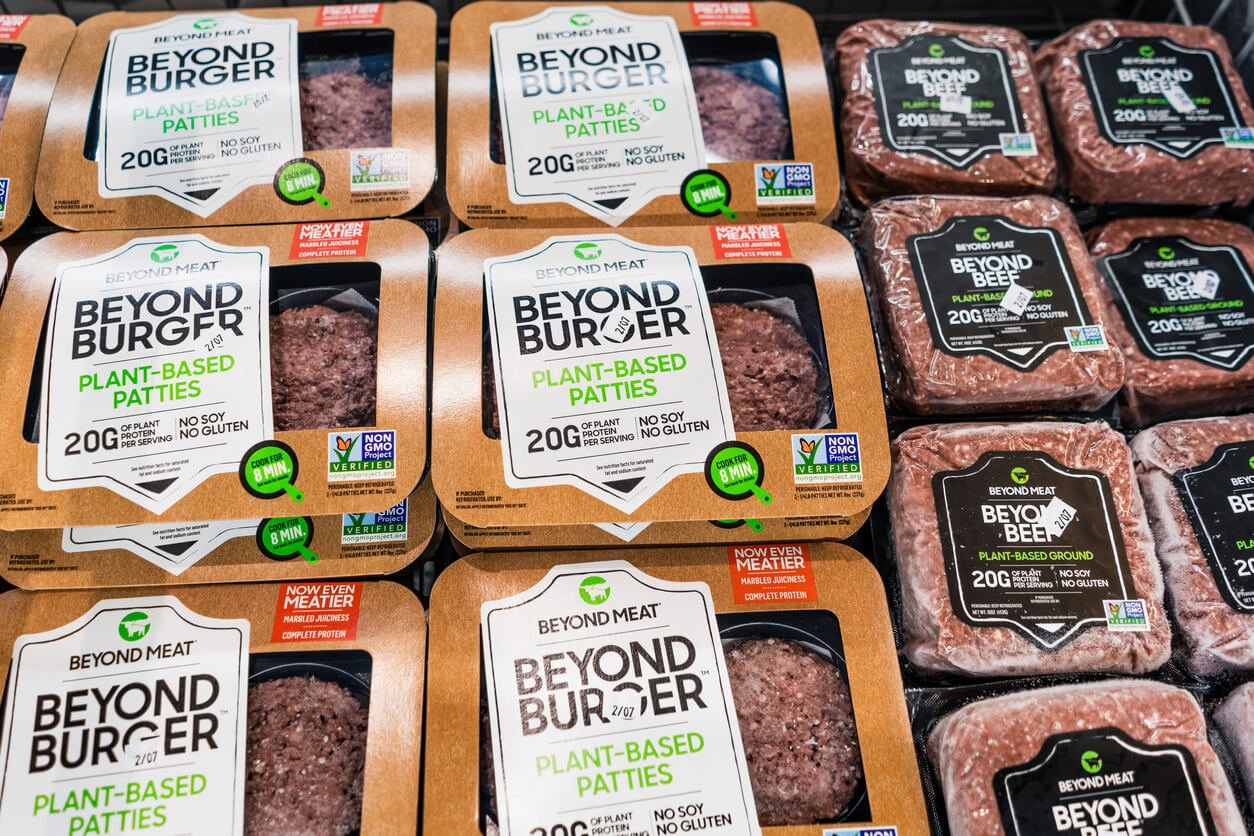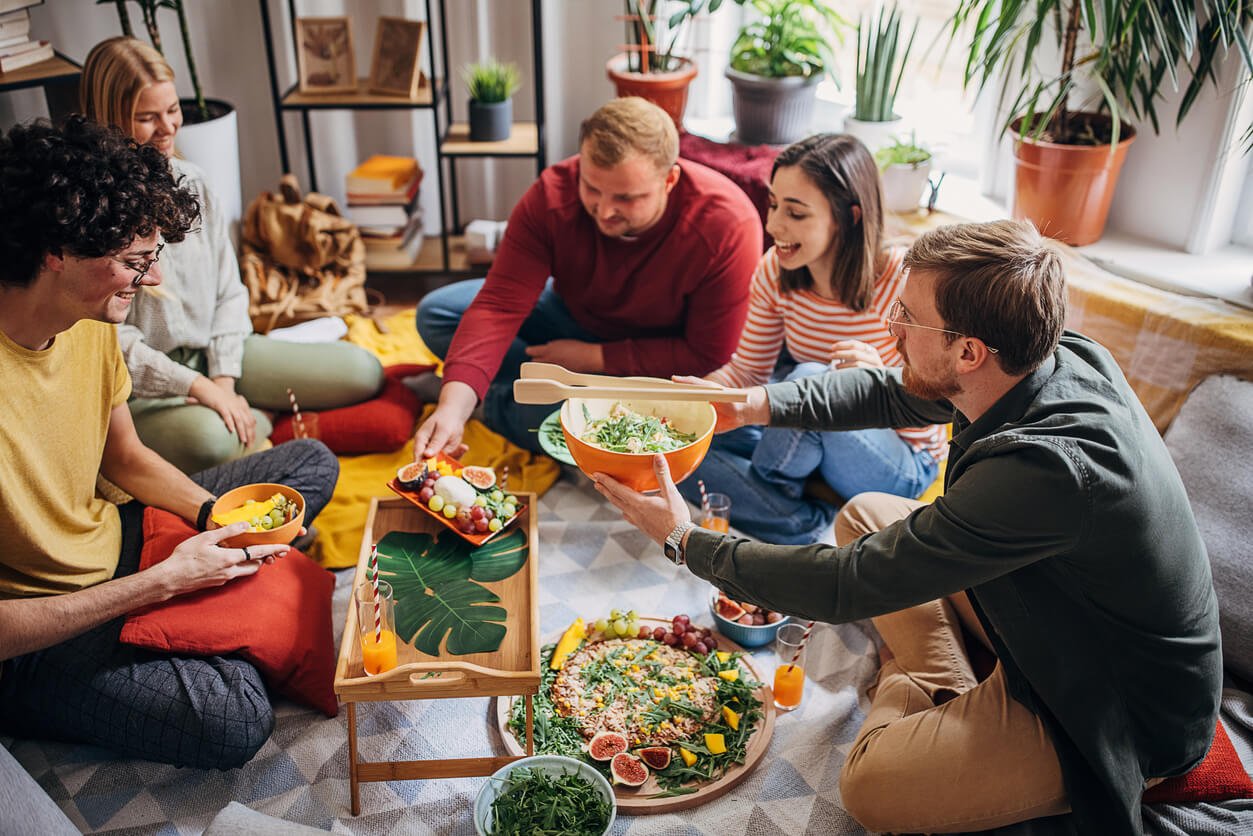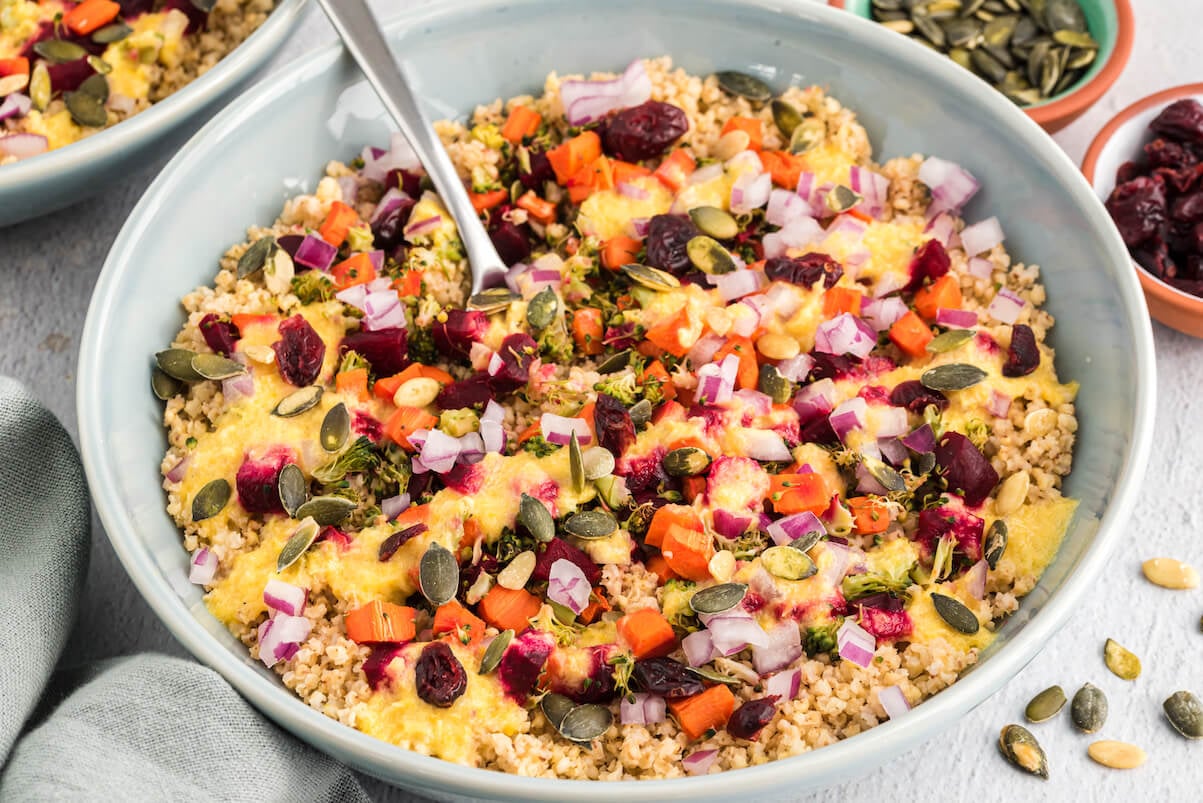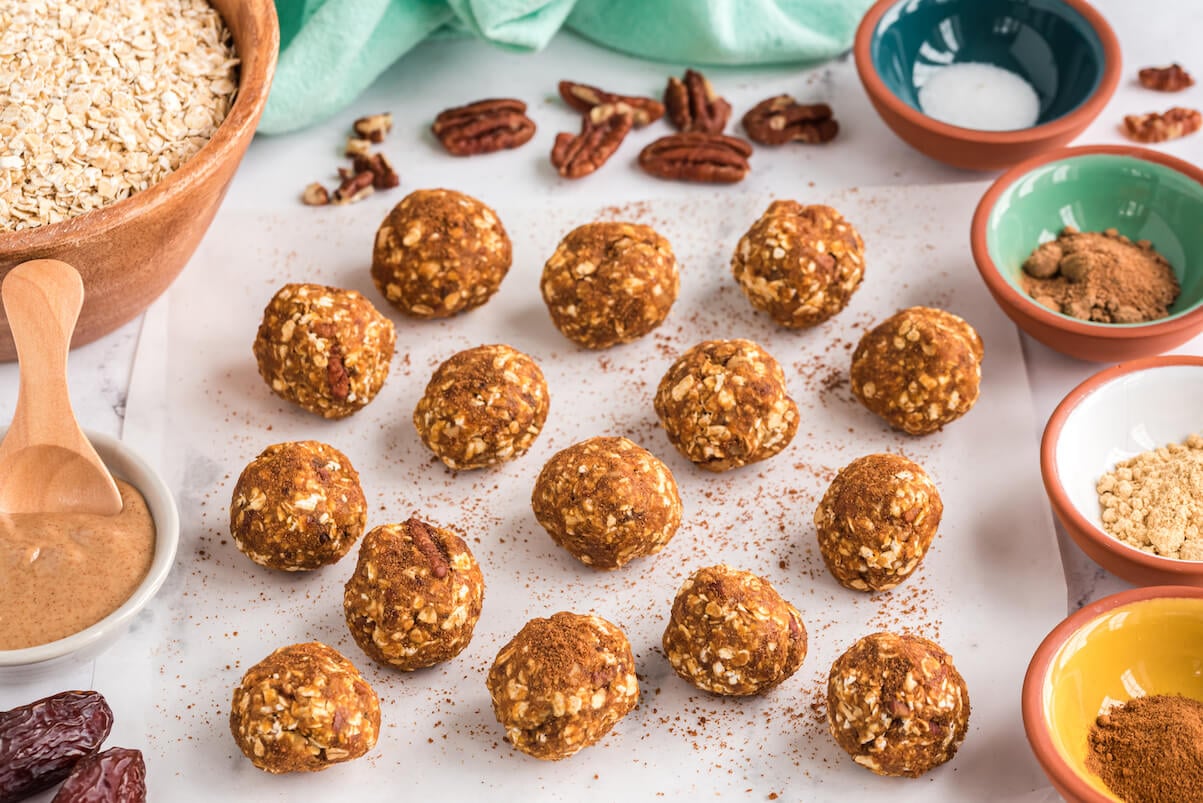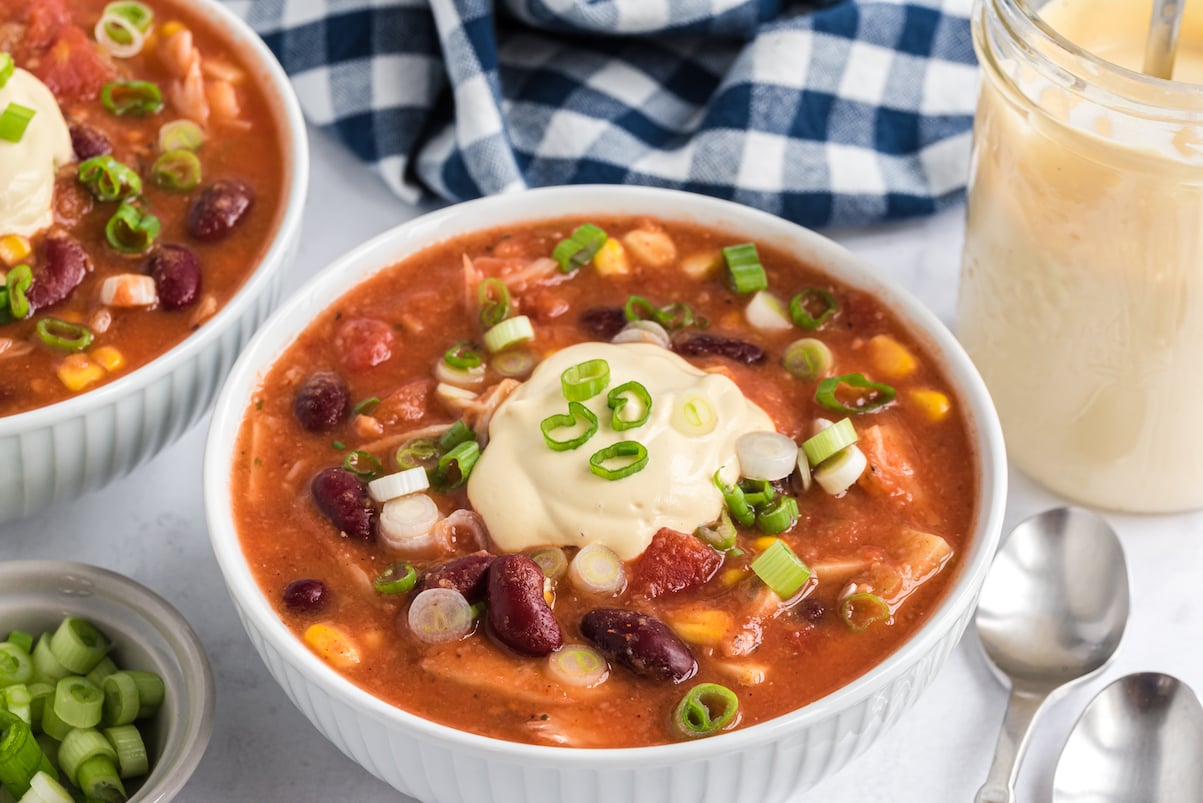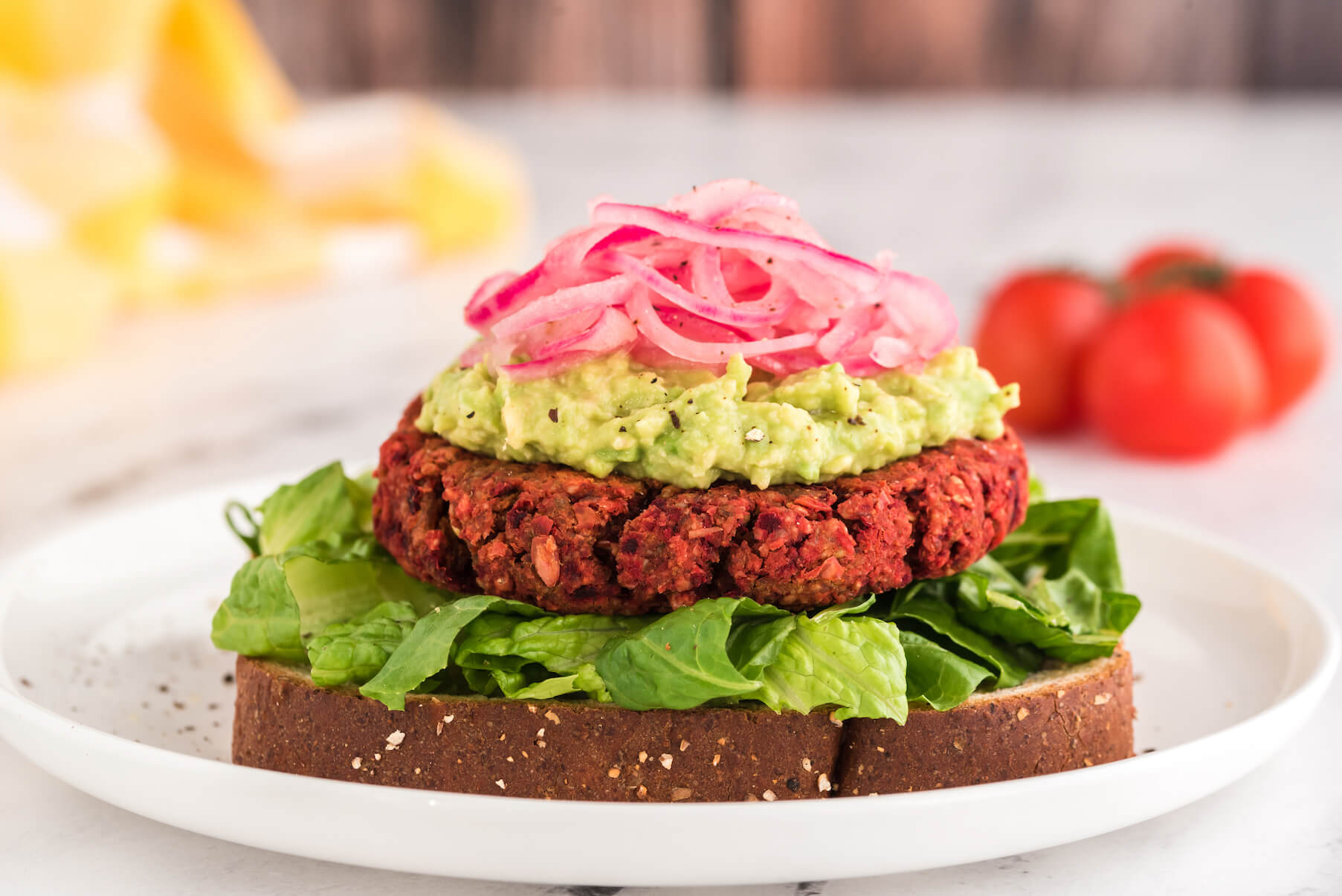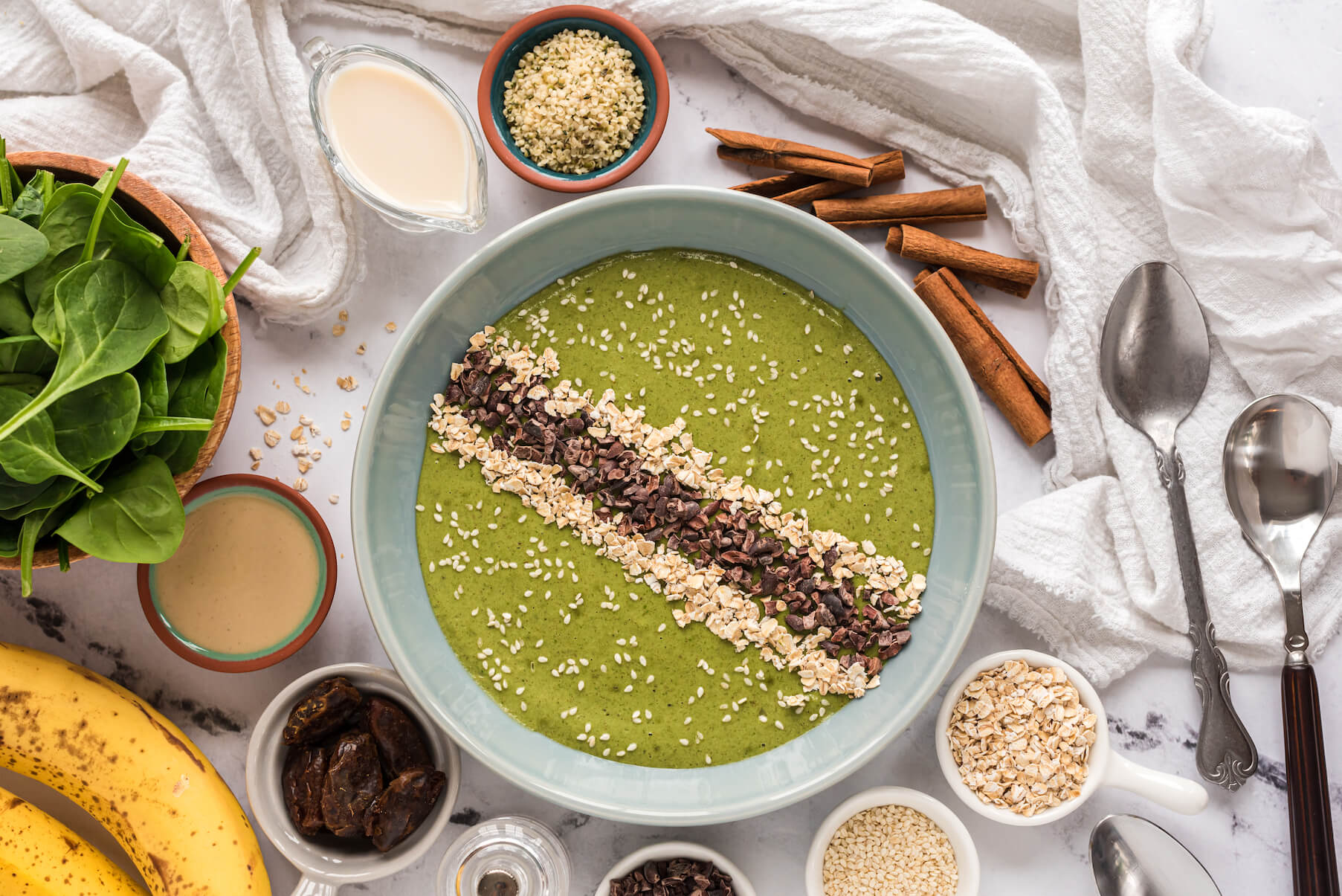A well-planned whole foods, plant-based lifestyle is a health-promoting, nutritionally smart, delicious, and enjoyable way to live and eat. Plus, it contributes to fewer animals living in abject misery on factory farms, far fewer greenhouse gas emissions, and to a safer and healthier world for future generations. So any and all steps taken toward a more plant-forward way of eating are worth celebrating in my book.
Yet, in my work with thousands of Plant-Powered & Thriving course participants and members of Food Revolution Network’s Whole Life Club, I’ve noticed five common missteps people take in the early days and weeks of plant-based eating.
This isn’t about a one-size-fits-all approach when transitioning to a vegan or plant-based diet. I don’t believe that there is only one “right” way to eat. Instead, I want to help people make the shift to plant-based in a way that truly works for you — and that’s both sustainable and nourishing, so you stick with it and feel great.
My wish for you is that your eating path serves your overall wellness and quality of life. So in this article, I want to help you understand the health benefits of a plant-based diet and how to transition to a plant-based diet by avoiding the five most common mistakes people make when first adopting this way of eating.
What Is a Plant-Based Diet?
Since there’s a lot of confusion out there, let’s start with a definition. When I talk about a plant-based diet, I’m referring to one based predominantly on whole plant foods, that minimizes or excludes animal products and byproducts. So plant-based diets typically include an array of fruits, vegetables, legumes (beans, peas, lentils), grains, nuts, and seeds.
The plant-based diet plan minimizes or excludes meat, poultry, eggs, fish and seafood, and dairy products such as cheese, yogurt, butter, and ice cream made from animals’ milk. A whole foods, plant-based diet also minimizes or avoids processed, refined, and artificial ingredients, including added sugars.
5 Common Mistakes Plant-Based Eaters Make
You might think that going plant-based couldn’t be easier or more straightforward; it’s all there in the name. Get the vast majority of your calories from stuff that grows from the ground and don’t eat things that came from animals or were made in factories.
But as they say, easier said than done. From marketing to habit to availability to busyness, a lot of things can make transition to a vegan or plant-based diet harder. Once you identify what those things are, you can prepare yourself to succeed when they arise.
Some of these mistakes are the result of unnecessary urgency. Take the transition to a plant-based diet at your own pace, rather than out of a perceived need to be “perfect” today. While some folks can turn on a dime, most people don’t do well going cold “tofurky.”
So here goes: the five most common mistakes that get in the way when you shift to a more plant-based diet as well as steps you can take to avoid them. And at the end, you’ll get some delicious recipes to help healthy practice become a healthy habit.
Mistake #1: Starting a Plant-Based or Vegetarian Diet by Relying on Processed Plant-Based Foods
When I was a kid, a veggie burger was something you made in your kitchen out of oats or brown rice, beans or lentils, flax seeds, and veggies. You could see the cubed carrots, kernels of corn, and chopped kale right there on your plate. And it typically fell apart before it reached your mouth. These days, you can fool most meat-eaters with a Beyond Burger or Impossible Burger, which looks and tastes so much like ground beef that die-hard meat-eaters often can’t tell the difference.
The fact that there are so many meat-free prepared foods and packaged options today is both a blessing and a curse. On the one hand, it’s never been more convenient and easy to steer clear of animal products, as there’s a plant-based or vegan substitute for just about everything you can imagine. In the past, you might have refrained from going plant-based because you just couldn’t imagine “giving up” some favorite animal product — bacon, scrambled eggs, deli meat, burgers, jerky, yogurt, milk, cheese — but now the vegan food industry has you covered. You can even find an array of vegan holiday centerpieces these days.
The problem is, these convenient and delicious options are often highly processed vegan foods. This is one of the key struggles some people face with plant-based and vegan diets: over-reliance on processed foods. Processed vegan dairy and meat substitutes may have a lot of added salt and sugar as well as saturated fat, and in some cases may even be contaminated with pesticides and GMOs — and contain unwanted additives and preservatives.
So beware the slick marketing that slaps the words “plant-based” or “vegan” on processed food to take advantage of the halo effect of these phrases. While meat and dairy analogs can help you transition at the beginning and can serve as occasional treats along the way, they don’t meet the definition of whole plant foods.
Success Step: Instead, prioritize planning a nutrient-dense, plant-based menu. What are some healthy plant foods you want to try? How can you do that? Many people find that meal planning and prepping for the week ahead takes away a lot of stress, and removes the need to make in-the-moment decisions when you’re hungry, tired, or stressed.
Mistake #2: Worrying About Protein When Transitioning to Vegan
For as long as I can remember, here’s how the dialogue has gone when people talk about switching to a vegetarian or vegan diet:
Person #1: “I’m vegetarian.”
Person #2: (Knits brow, assumes worried expression) “So where do you get your protein?”
The most common misconception around plant-based diets is that they are deficient in protein. This mistake has a long and complicated history, the gist of which is that in many people’s minds, “protein” has been synonymous with “meat,” and has been given the status of the “best” nutrient. Meanwhile fat and carbohydrates battle it out over which one is the “real” villain (spoiler alert: it’s neither).
The problem with this narrative is threefold. First, well-planned diets can provide sufficient plant-based protein to all, including the most extreme athletes. Second, the modern industrialized human eats way more protein than they need. And third, excess protein — in particular, animal protein — actually can be harmful and lead to disease and degeneration.
Plant-based amino acids provide more than enough protein for a human diet. Plant protein is not “inferior” to animal protein, nor should you think of it as an alternative protein source. Protein is protein. Animal protein is not “complete,” and plant protein is not “incomplete.” That was an unfortunate myth that took hold in the 1960s and had anxious vegetarians obsessing over food-combining at every meal.
Plants contain all nine essential amino acids. It’s true that some plant foods are low in certain amino acids. For example, some grains are low in lysine while some legumes are low in methionine. Getting adequate amounts of all nine essential amino acids isn’t difficult when you eat enough food, in general, and include a variety of plant-based foods. The risk of amino acid deficiency would mostly be an issue for someone who, for example, only ate rice every day or only ate beans every day, and nothing else.
Success Step: Swap beans (and more!) for beef. Excellent plant-based sources of protein include beans, peas, lentils, nuts, seeds, and soy foods; certain grains and legume-based pastas; even fruits and vegetables contribute a small amount. So rather than fret over protein, simply eat a variety of different whole plant foods to cover all your amino acid needs.
Want to know more about protein, how much you need, and where to get it? Check out our article on plant-based protein, here.
Mistake #3: Believing supplementation is never necessary on a plant food diet
While a varied diet based on whole plant foods will cover most of your nutritional bases, there are a few nutrients that often need to be added via supplementation to prevent deficiencies.
And when shopping supplements, you may want to look for plant-based vitamins or vegan supplements, which aren’t made with animal products, and are disclosed on product packaging.
B12
Vitamin B12 is probably the most important supplement for plant-based eaters (and really for everyone else, too). It’s crucial for red blood formation, reproduction, neurological function, and DNA production.
So if plant-based diets are so great, how come we need to supplement them with B12? It’s at least in part because of changes in our food supply and environment over the past hundred years.
B12 is produced by single-celled microorganisms that live in soil, as well as in the intestines of animals and humans. Some humans appear to have bacteria in their gut that make enough for them, but many do not. And most of us can no longer meet our B12 needs from nature because of modern sterilization practices, chlorinated water, antimicrobial efforts, and industrialized farming practices. Studies estimate that 20–40% of people globally (including many meat-eaters) are B12-deficient.
So most of us — not just vegans — are at risk of B12 deficiency. We can get it from fortified foods, such as some brands of nutritional yeast and plant milks. But the safest way to ensure sufficient vitamin B12 is to take a supplement.
Vitamin D
Vitamin D is another nutrient of concern, and again not just for those on plant-based diets. At least 50% of the global population doesn’t get enough of this nutrient, which is important for immunity and bone health. Vitamin D is also being studied for its ability to prevent and lessen the severity of COVID-19 infections.
Like with B12, it’s not necessarily the diet per se that’s the problem, but rather our modern existence. Technically, vitamin D isn’t really a vitamin because we can make it ourselves when our skin is exposed to direct sunlight. It’s only the invention of “indoors” that keeps most people from producing enough vitamin D to meet their bodies’ needs.
Some animal-based foods do provide some vitamin D, including fatty fish and egg yolks. Plant-based eaters can get some vitamin D from fortified plant milks, as well as certain varieties of UV-treated mushrooms. But by far the most reliable way to meet your needs is through a daily vitamin D3 supplement, at least in the winter months if you don’t get much sun where you live, or as a year-round maintenance dose.
Omega-3s
Omega-3 fatty acids are important for brain health, skin, and protection from neurodegenerative diseases. It’s easy to get the precursor form of omega-3, called ALA, from plants; the best sources of ALA are flax and chia seeds, and there are smaller amounts in walnuts, hemp seeds, and some leafy greens. We then convert ALA into other forms our bodies also need — principally EPA and DHA. The problem is, the conversion rate is low and varies significantly from person to person.
Fish and other seafood contain DHA + EPA, which they get by consuming algae. If you choose not to consume sea animals or supplements made from their oil, you can skip the middlefish and take a plant-based, algae-derived omega-3 supplement.
Iodine
There are a few other nutrients that you may want to supplement, depending on your needs and your diet. Iodine is a nutrient crucial to proper thyroid function. We get iodine from sea vegetables and iodized salt, but if you’re trying to limit your sodium intake, the best way to meet your iodine needs may be through supplementation. You can take a dedicated iodine supplement or a multivitamin that contains iodine.
Iron
The type of iron in plant foods (non-heme) is different from the type found in animal products (heme) and tends to be less readily absorbed in our bloodstream. Many people get too much iron, so lower bioavailability is often a good thing. But not for everyone.
The best plant sources of iron include legumes, dark leafy greens, seeds, and nuts. You can boost your iron absorption by eating vitamin C-rich foods at the same time. These include citrus fruits, strawberries, bell peppers, broccoli, tomatoes, and many others.
Vitamin K2
Vitamin K2 helps support bone and heart health when combined with vitamin D. There are two forms of vitamin K: K1 and K2. K1 is easy to source from leafy greens, but K2 is harder to find in plants, unless you’re a regular eater of a fermented dish called natto. If natto isn’t your thing, vitamin K2 may be found in other fermented foods. While the exact amount of K2 in fermented foods can vary, consuming some sort of fermented foods (like kimchi or sauerkraut) daily may help directly deliver K2 and it may also promote healthy bacteria, which could possibly lead to making K2 in your gut. Or to be sure, you can take a supplement.
Success Step: Find reliable plant-based supplements to support your diet, especially for the nutrients mentioned earlier in this article. When shopping for supplements, look for plant-based vitamins or vegan supplements, all of which are disclosed on product packaging. And, in consultation with your healthcare provider, make them a regular part of your routine.
Mistake #4: Limiting Your Menu
Thanks to Hollywood tropes linking healthy eating to ascetic and joyless lives, there’s a common misconception that to going plant-based means subsisting on leafy greens, with the occasional carrot thrown in for variety. And while I love a big bowl of leafy greens, this is far from the only thing on my menu or the menu of most plant-based eaters today.
One of the best parts of adopting a plant-based diet is the chance to experiment with an abundance of beautiful, colorful, versatile plant foods you may never have tried before.
Most people don’t know this, but each type of plant provides a unique type of fiber. And each type of microbe in our guts needs different types of fiber. So we need many, many different types of fiber in order to feed the diversity of microbes that we need to be healthy. That’s why you’ll thrive the best when eating a wide range of different veggies, legumes, whole grains, fruits, seeds and nuts, mushrooms, etc.
Success Step: Not sure where to start? Check out the recipes below, bookmark a few plant-based blogs (like FRN!) for inspiration, or crack open a plant-based cookbook. If you’re just getting into this way of eating, you might plan to try just one new recipe every week.
Mistake #5: Comparing Your Plant-Based Diet (& Yourself) to Others
When adopting a plant-based diet, remember that it’s a change you’re making for your own reasons. This means that you get to design your own diet, to meet your personal needs and preferences. The best whole foods, plant-based diet is the one that is optimal for you, your health, and your values. It doesn’t have to be identical to mine, your best friend’s, or anyone else’s.
Comparison is a thief of joy, whether we’re talking about our net worth, physique, ability to play the intro to “Purple Haze” on electric guitar, or our diet and lifestyle choices. And it can make it harder to stick to a specific way of eating if you’re constantly trying to measure up and achieve “the best diet.” Make plant-based eating work for you, and don’t worry about whether your version or anyone else’s is healthier, purer, or better.
Success Step: Rather than comparing or competing, connect with others who are also somewhere on the plant-powered path — sharing mutual support, encouragement, socialization, and inspiration. Potlucks, collective meals, and plant-based recipe swaps can help everyone up their healthy eating game — and have more fun in the process. And, if you want to be sure that you’re meeting your nutritional needs, then you might consider meeting with a plant-based dietitian.
Best Foods for a Healthy Plant-Based Diet
As you’re transitioning to a plant-based diet, be sure to prioritize whole plant foods as much as possible. These provide you the most nutritional bang for your buck, plus they’re delicious — and they get better tasting over time as your taste buds and neural pathways adjust. You’ll learn countless ways to use new foods, even some you thought you didn’t like before. Here’s a quick list of the basics, and some creative ways to use them.
- Beans and lentils
- Homemade veggie burgers
- In spaghetti sauce over pasta
- Bean-based no-bake energy snack balls
- Roasted chickpeas over salad or as a crunchy seasoned snack
- Topped on nachos
- Tacos, enchiladas, burritos, and burrito bowls
- Fruits
- In smoothies
- Toppers for oatmeal, plant-based yogurt, or cereal
- Eaten on their own or with nut butter as a snack
- Chopped and used in a grain or leafy green salad
- Roasted/grilled peaches or baked apples
- Avocado toast
- Vegetables
- Steamed, roasted, grilled, sauteed
- On kabobs
- Toppers for homemade pizza
- On stir-fries and pasta dishes
- In smoothies: leafy greens, peas
- Blended to make tomato-based sauces
- Vegetable and bean soups
- Layered raw vegetable sandwiches
- Served raw with hummus
- Made into chips in an air fryer
- Whole Grains
- Cooked in water or stock and served with a yummy sauce
- Quinoa, amaranth, millet, or oats as a breakfast cereal base
- Experimenting with different whole grain flours in baking
- Whole wheat noodles and breads
- As flours for homemade pizza dough, pancakes, and waffles
- Grain salads using farro, amaranth, millet, teff
- Air-popped popcorn
- Nuts and seeds
- Make homemade nut or seed butters
- Eat raw, unsalted as a snack or in trail mix with dried fruit
- Chop and add to grain or leafy green salads
- Use cashews to make cashew cream for soups or a plant-based cheese sauce
- Add to smoothies
- Spread on toast or in sandwiches, on pancakes and waffles
To experience plant-based ingredients in action, try some of the recipes below.
Recipes to Help You Transition to a Plant-Based Diet
Choosing a variety of nutrient-dense, plant-based foods shouldn’t be difficult when there are over 20,000 edible plants in the world. Of course, not all 20,000 of these may be readily available to you, but many probably are!
The Harvest Grain Breakfast Bowl provides an array of nutrients through a variety of ingredients that also provide plenty of flavor and texture. Choose snacks wisely by picking those that contribute to your overall nutrient intake, like the simple-to-make Pumpkin Oat Bites. You can satisfy the entire family by giving them a taste of nourishing plant-based meals such as Jackfruit Taco Chili. Get a variety of flavors, textures, and nutrients by making and assembling the Beet Burgers with Smashed Avocado and Pickled Red Onions. And give your plant-based meal plan daily reassurance by including the Vitality Smoothie Bowl each day as either breakfast or lunch, a snack, or an after-dinner treat.
1. Harvest Grain Breakfast Bowl
Start your day with a well-rounded, nutrient-dense breakfast. The Harvest Grain Breakfast Bowl is packed with a variety of good-for-you ingredients, flavors, and textures that will help you enjoy a plant-based diet. There’s zinc in the pumpkin, protein in the millet, and iron in the beets. It’s satisfying to both your belly and your body! P.S. If you’re not a savory breakfast person, this bowl also serves nicely as lunch or dinner!
2. Pumpkin Oat Bites
Having well-balanced snacks on hand that offer whole-grain carbohydrates, plant-based protein, healthy fat, and plenty of micronutrients will help you stay energized throughout the day. Protein is found in the oats (5 grams per ½ cup rolled oats!), almond butter, hemp seeds, and pecans. You’ll also get healthy omega-3 fats from the hemp seeds. These bite-sized snacks are also a good source of iron from oats, hemp seeds, and dates. Not to mention they’re mighty tasty!
3. Jackfruit Taco Chili
Jackfruit isn’t necessarily known for its protein content, although it does have a bit. It is known as a meat substitute, though, with its pulled pork-like texture. The protein in this dish comes from the beans which also bring iron, while vitamin C-rich tomatoes maximize iron absorption from those beans. If you choose to use salt, use iodized salt unless you’re taking a multivitamin that includes iodine. Add some mushrooms for a mini dose of vitamin D (but don’t forget to get a little sunshine too!).
4. Beet Burgers
This burger checks all the boxes — it’s simple to make, tastes delicious, is extremely satisfying, and is packed with nutrition. You’ll get iron from the beets and beans, omega-3 fatty acids from the flax, and prebiotic fiber from the oats and onions, which may help to synthesize vitamin K2 in your gut. Add some healthy bacteria to feed on the prebiotic fiber by adding a tablespoon of fermented kraut or kimchi to each burger!
5. Vitality Smoothie Bowl
Smoothies and smoothie bowls are a wonderful and tasty way to add a variety of nutrients that are sometimes a challenge to get on a plant-based diet. One way to include vitamin B12 and vitamin D is to choose a fortified plant-based milk if you use store-bought. (If you make your own plant milk, you may need to get your B12 and vitamin D from other fortified foods, supplements, or in the case of Vitamin D, the sun). Hemp seeds offer omega-3s, though you could get even more if you use chia or flax meal in their place. Spinach and cacao add iron. Add some berries, naturally rich in vitamin C, to maximize iron absorption. Finally, stir in some probiotic-rich and creamy plant-based yogurt to potentially stimulate gut synthesis of vitamin K2.
Transitioning to Vegan Takes Time, Guidance, and Patience
Transitioning to a plant-based diet can be a wonderful thing, not just for your own health but for the health of the animals, the planet, and everyone around you. Plant based food benefits far outweigh any cons of following a vegan or vegetarian diet. And while whole foods, plant-based diets can meet the majority of your nutritional needs, it’s important to supplement appropriately and plan a well-rounded diet that incorporates an array of healthy foods. Make plant-based eating work for you by intentionally designing a plan that meets your needs and preferences. By doing so, you can avoid the most common plant-based eating mistakes and experience all of the wonderful things this diet has to offer.
Tell us in the comments:
- If you’re just getting started with a plant-based diet, what part of this article did you find most useful?
- If you’re a plant-based pro, what advice would you add for folks who are just beginning their journey?
- What’s a new (to you) plant-based food or ingredient that you’d like to try?
Feature Image: iStock.com/SolisImages

